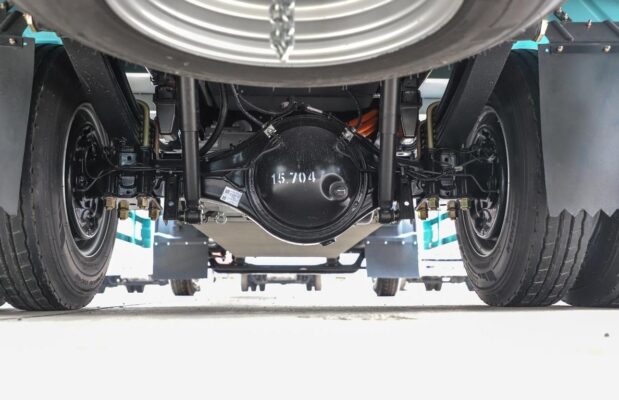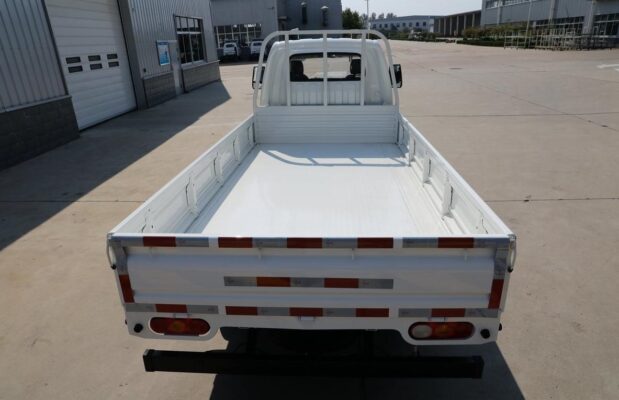Новости электрических грузовиков
How much do you know about the precautions for maintaining new energy vehicles in summer?
Опубликовано в от Электрические грузовики
Now it is midsummer, a season marked by complex and changeable weather phenomena. Sometimes there is a high temperature warning, and at other times, a rainstorm hits unexpectedly, leaving people feeling at a loss. This is true for people, and it is even more so for cars, especially new energy vehicleс. In such hot and humid weather, taking good care of our beloved cars becomes a crucial task. So, how can we ensure the proper maintenance of our new energy vehicles during this challenging season?

Here comes the valuable information! EWAY New Energy Vehicle are here to offer you some great tips. Easily obtain summer maintenance tips and keep your vehicle in top shape.
- Correct parking, reasonable charging, and prevent fires before they occur:
New energy vehicles are composed of batteries as the basic core part, which serve as the power source for the entire vehicle. Therefore, regular inspection and repair are essential. When parking your new energy vehicle, it is important to choose a proper location. Try to find a shaded and ventilated place to park. This not only provides a cooler environment for the vehicle but also helps protect the battery. Placing the battery in a ventilated place allows for better heat dissipation, ensuring its normal operation and prolonging its service life.
Charging is another critical aspect of maintaining new energy vehicleс. Do not expose the vehicle to the sun for a long time or charge it in high temperature weather. High temperatures can have a negative impact on the battery’s performance and lifespan. When charging in hot weather, the battery may heat up more quickly, increasing the risk of overheating and potential damage. It is advisable to charge the vehicle in a cool and shaded area or during cooler times of the day, such as early morning or late evening.

Кроме того, pay close attention to cleaning up flammable items in the car. New energy vehicleс, like any other vehicle, can be a potential fire hazard if flammable materials are left inside. In hot weather, the risk of fire is even higher. Make sure to remove any items such as paper, cloth, or flammable liquids from the vehicle to reduce the risk of spontaneous combustion.
Например, imagine parking your new energy vehicle in an open area under the scorching sun for an extended period. The high temperature can cause the battery to heat up rapidly, potentially leading to overheating and reducing its lifespan. On the other hand, if you park in a shaded and ventilated place, the battery will stay cooler, ensuring better performance and longevity.

- Regular inspection, protect the chassis, and strictly prevent it from being knocked:
Unlike fuel vehicles, most of the motors of new energy vehicles are distributed on the chassis. The quality of the chassis directly affects the operation of the entire vehicle. Therefore, it is essential to regularly inspect the bottom of new energy vehicleс. This includes checking for any signs of damage to the wiring, the protective layer, or other components. Regular inspections can help detect potential problems early on and prevent major vehicle failures.

During rainy days, special care should be taken when driving on slippery and potholed sections. Be cautious and slow down to avoid grounding the vehicle. Grounding can damage the battery and other important components, causing unnecessary troubles. The bottom of new energy vehicles is often more vulnerable to damage due to the presence of the motor and battery. A damaged chassis can lead to electrical problems, reduced performance, and even safety hazards.
Например, suppose you are driving your new energy vehicle on a rainy day and encounter a section of the road with deep potholes. If you drive through too quickly without being careful, you may risk damaging the chassis. This could lead to problems with the motor or battery, affecting the vehicle’s performance and reliability.

- Don’t panic when encountering water immersion and never start the vehicle a second time:
New energy vehicles have a certain advantage in wading ability compared to conventional fuel vehicles because the environment where the motor is located is relatively closed. Однако, in thunderstorm weather, it is inevitable to pass through waterlogged sections. When facing such situations, it is crucial to slow down in time and observe the water depth. Assess the situation carefully and pass at a constant speed if it is appropriate. Do not rush through deep water without considering the potential risks.
Once your new energy vehicle is immersed in rainwater, don’t panic. Большинство new energy vehicles are equipped with an emergency power-off function. As long as the maintenance switch is pressed, the power will be automatically cut off, thereby reducing the damage to important components such as the motor and battery. Remember not to start the vehicle a second time after it has been immersed in water. Starting the vehicle again can cause further damage to the electrical system and may even lead to more serious consequences.

Например, imagine driving through a flooded area and accidentally submerging your new energy vehicle in water. If you panic and start the vehicle without thinking, you may cause significant damage to the electrical components. Однако, if you remain calm and follow the proper procedures, such as pressing the emergency power-off switch, you can minimize the damage and ensure the safety of the vehicle.
Remember the above few tips to let you spend the scorching summer perfectly and instantly become an experienced driver! By following these precautions, you can ensure the proper maintenance and safe operation of your new energy vehicle during the summer months. Regular inspections, correct parking and charging practices, and careful handling in wet conditions can go a long way in protecting your investment and ensuring a smooth driving experience. Whether it’s protecting the battery from overheating, safeguarding the chassis from damage, or dealing with water immersion, these tips will help you keep your new energy vehicle in top condition all summer long.